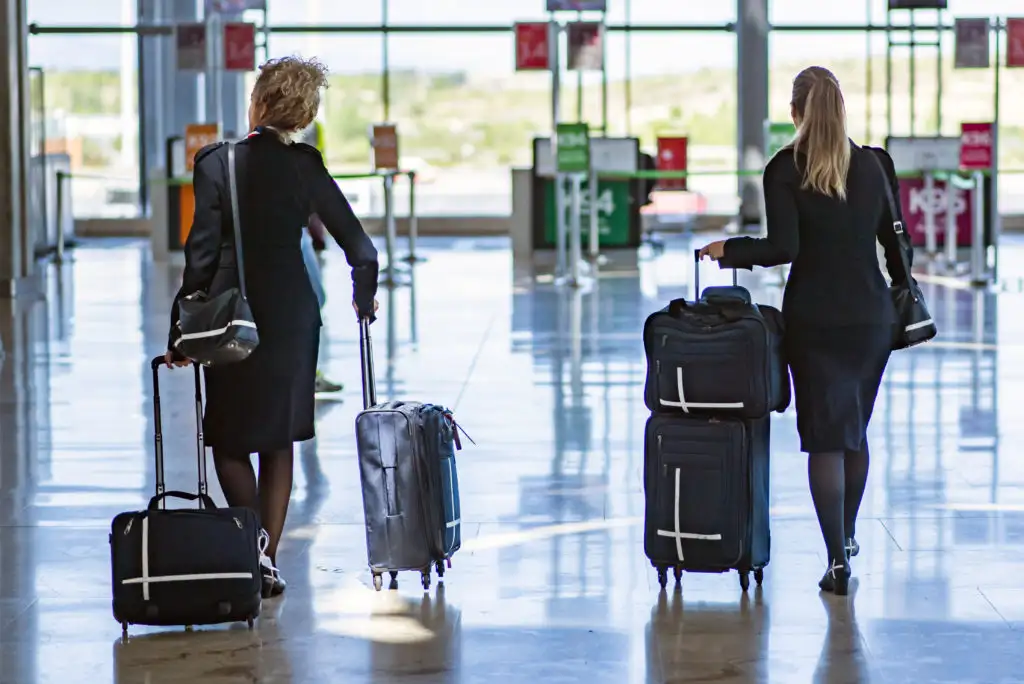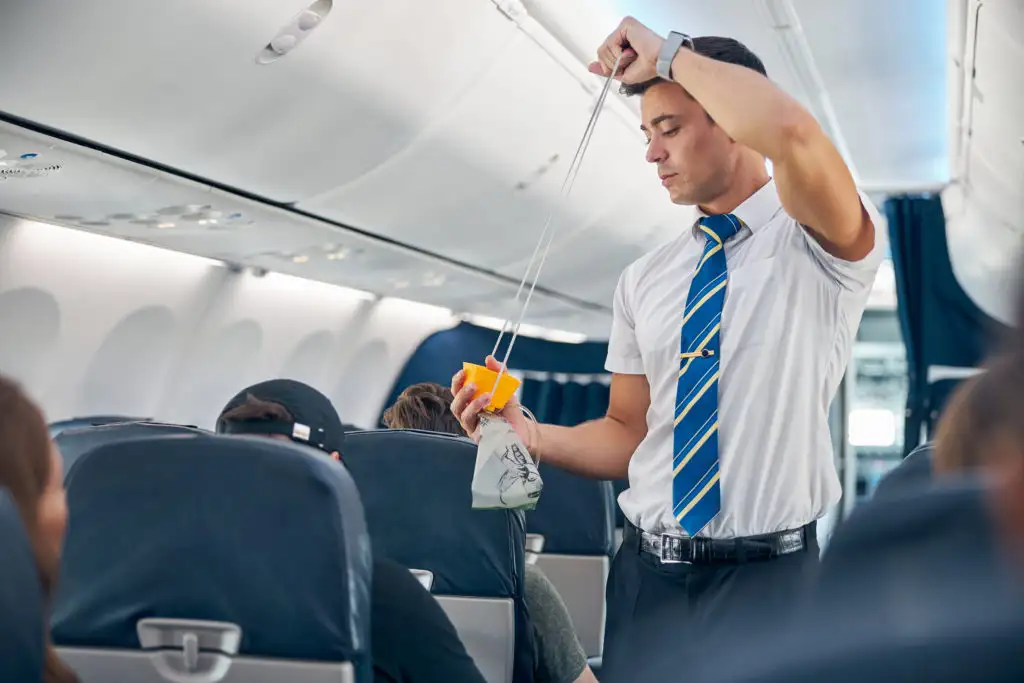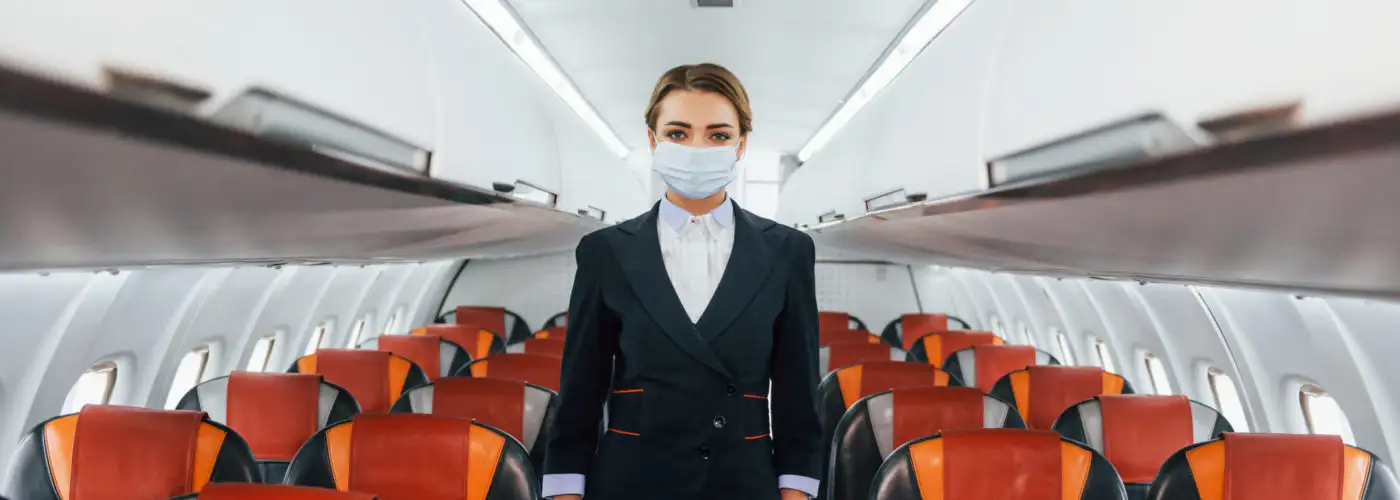Unless you’re unlucky, most passengers will only ever see flight attendants in a service role—helping with the boarding process, serving beverages, and passing out meals. However, the main responsibility of flight attendants is safety, and all flight attendants must attend self defense training in order to fly.
During a new-hire flight attendant’s “initial” training program, many assume the recruits are primarily being taught how to pour coffee during turbulence, and pick up trash when those are the last things on the syllabus and airlines generally spend little time on service requirements. Over 95% of the training program is spent on safety and security training.
Although I’ve since hung up my wings as a crewmember, my initial training program at my last airline was roughly a month long. It was the third time I was going through an “initial” program with an airline so I was very familiar with the processes, and had a pretty good idea of what was expected of me and my classmates. However, there was one training module that took me by surprise: their approach to self-defense training.

Somewhere around the second week of training we arrived at headquarters in full uniform to find blue mats, much like you would find in school gyms, covering the floor. As we all took our seats we were told we were expecting some special guests from the San Francisco Police Department to lead us through our self-defense training.
I had assumed they would talk about various threats, tactics or maneuvers, but shortly after their arrival my classmates and I were flying, literally flying, all over the room in our perfectly pressed clothing. The SFPD didn’t just tell us about some tactics and maneuvers, they taught them to us by performing them on us. They created scenarios which could unfold in the cabin within a confined space and we took turns playing the role of the crew trying to contain the situation. In some cases, the SFPD officers were literally flipping us upside down on to the mats, having us kick and punch them (they had protective gear, of course!) and they weren’t always being gentle about it. They reiterated that they wanted to ensure we were prepared if we ever had to encounter a similar situation onboard, and being dressed the way we were would add a little bit of “real life” to the scenario.
Not every airline takes their defense training to this level. The two airlines I flew for previously had their own versions of the module that were a lot less intense but did provide crewmembers with the necessary front-of-mind thought process on how to handle a dangerous situation.
In addition to self-defense training provided by the airlines, The Transportation Security Administration (TSA) also offers crewmember voluntary self-defense training classes that were available to flight attendants from any airline regardless of their prior training.
Sara Nelson, President of the Association of Flight Attendants has said recently of the surge in inflight incidents: “We’re concerned every single day when we go to work and put that uniform on, are we the target and going to be punched in the face today?” The TSA responded by resurrecting the crewmember self defense classes that were previously cancelled during the pandemic.

The TSA’s free, four-hour training program is now delivered at more than twenty sites nationwide, both at community college and Federal Air Marshal locations throughout the country. At a recent training event held in Seattle, Brent, one of the two air marshals teaching the course said: “You’re not going to beat someone up for not wearing a mask, but in situations when your life is in danger, we are teaching you to be the aggressor. We have one rule: you win.”
Flight Attendants are aviation’s first responders. They’re first to report issues in the main cabin or other parts of the aircraft that the pilots can’t see, first to arrive at an inflight medical situation, first to assist in an emergency evacuation, and the first line of defense to protect the safety of all passengers onboard.
Although service and traveling the world may be their passion, and you generally see flight attendants in the aisle with a smile, safety and security is their top priority and they’ve been expertly trained to handle all of it.
You Might Also Like:
• 8 Tips from a Flight Attendant’s Daughter to Save Money on Your Next Flight• The Best Over-the-Counter Sleeping Pills for Long-Haul Flights
• Porter Airlines PorterClassic Standard Flight Review
• How to Properly Disinfect Your Airplane Seat
• 18 Things You Should Always Wear on a Plane
We hand-pick everything we recommend and select items through testing and reviews. Some products are sent to us free of charge with no incentive to offer a favorable review. We offer our unbiased opinions and do not accept compensation to review products. All items are in stock and prices are accurate at the time of publication. If you buy something through our links, we may earn a commission.
Related
Top Fares From
Today's Top Travel Deals
Brought to you by ShermansTravel
France: 8-Night Paris, Avignon & Nice...
Infinity Worldwide Vacations
 vacation
$2880+
vacation
$2880+
Poconos: 3 Nts in Garden of...
ResortsAndLodges.com
 hotel
$305+
hotel
$305+
7-Nt Canada & New England Cruise,...
Princess Cruises
 cruise
$839+
cruise
$839+




